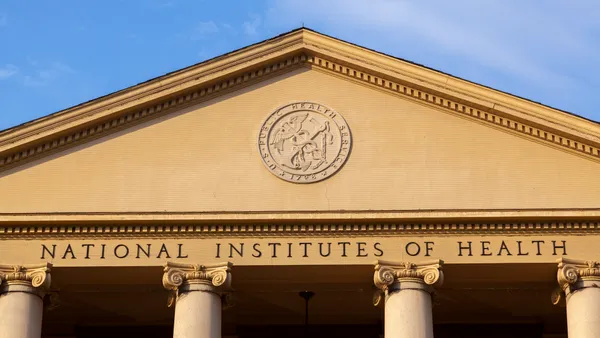Dive Brief:
- Leaders at Iowa's community colleges would be responsible for creating the state's funding distribution model for their institutions under a bill advanced by a House panel Wednesday.
- Iowa's unusual method for distributing general funding to community colleges is codified into law, and any changes require legislative intervention. The proposed bill would allow the colleges' leaders to make updates annually.
- If two-thirds of the 15 leaders could not reach a consensus in any given year, the Iowa Department of Education would take over the task of creating the funding model.
Dive Insight:
Iowa’s community college funding formula allocates funding based on several factors, including annual inflation, enrollment and how much state aid the colleges received last year.
Under the new proposal, the chief executives of the state’s 15 community colleges approve a distribution formula by Oct. 31 for the following budget year.
The change would give flexibility to the state's community colleges amid a shifting higher education landscape, said Emily Shields, executive director of Community College for Iowa, a membership organization that advocates for the institutions.
"Our funding formula for community colleges is laid out in code in a very detailed way," Shields said Wednesday.
As a result, funding hasn't kept pace with enrollment and there's a growing gap from college to college as to how much they receive per student.
"Everything is changing so much more quickly,” Shields said. “We have to keep up.”
Representatives from the Iowa Association of Community College Trustees also supported the bill.
The House Education Appropriations Subcommittee unanimously approved the bill Wednesday, sending it to a full committee vote. The legislation already passed Iowa's Senate earlier this month.
If approved, it would take effect for the fiscal year beginning July 1, 2025.
Higher ed leaders and lawmakers elsewhere have also been debating the best ways to fund community colleges.
Last year, Texas Gov. Greg Abbott signed a law tying a majority of state funding for community colleges to performance-based measures, including the number of credentials offered in high-demand fields and the wages graduates earn. The new model also came with an increase in funding for the state's 50 community colleges.
Ray Martinez, president and CEO of the Texas Association of Community Colleges, said the increased focus on workforce education has changed student goals.
The majority of community college students "come in thinking that they might want to transfer to a university," Martinez told the Texas Standard last week. But more and more, students are enrolling in the state's community colleges, wanting to "learn a skill … and get to work."
Meanwhile, recent research found that a hybrid distribution model — one based on enrollment, performance metrics and previous state allotments — is tied to increased community college enrollment among Black, White and Asian students.










